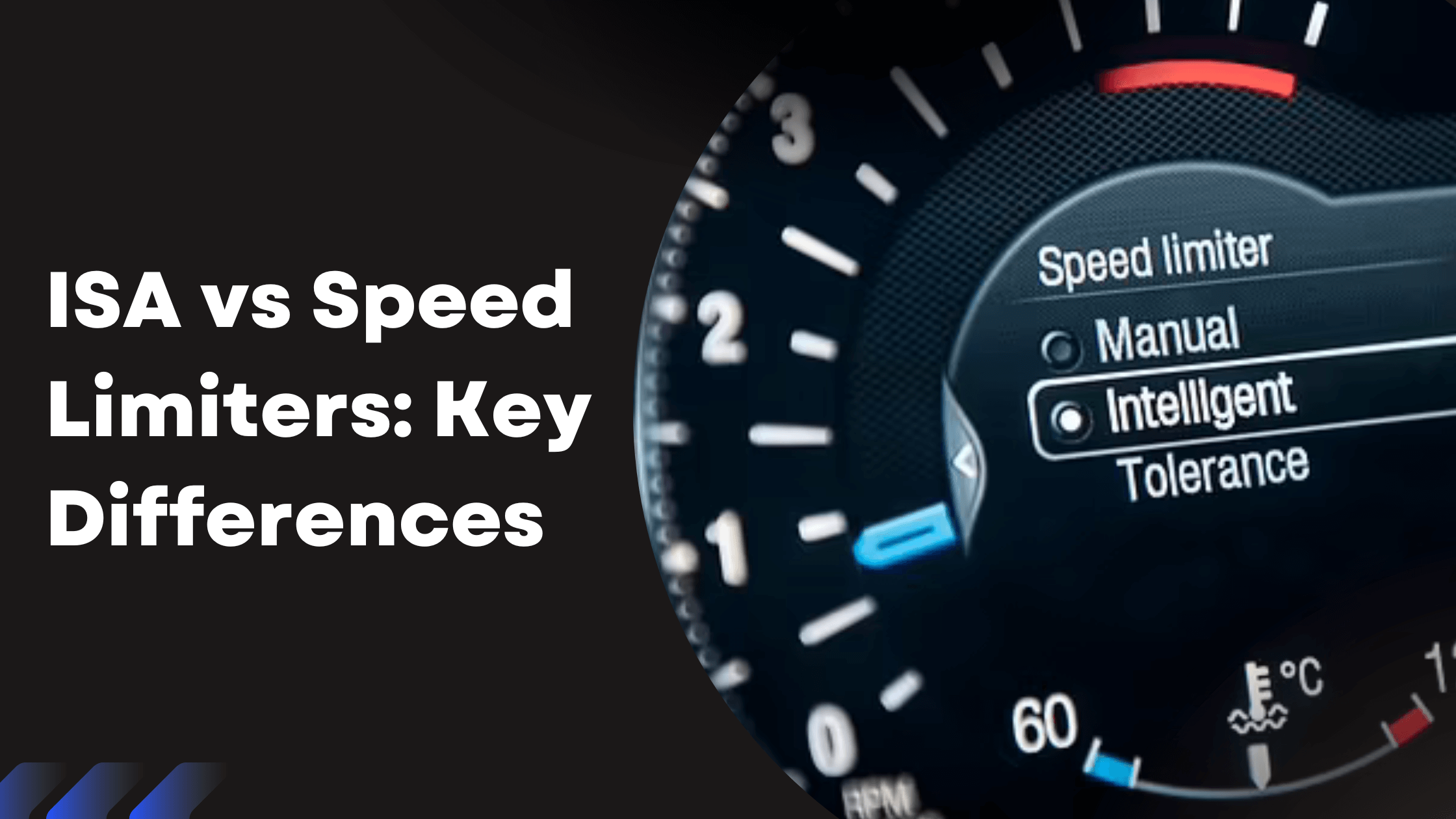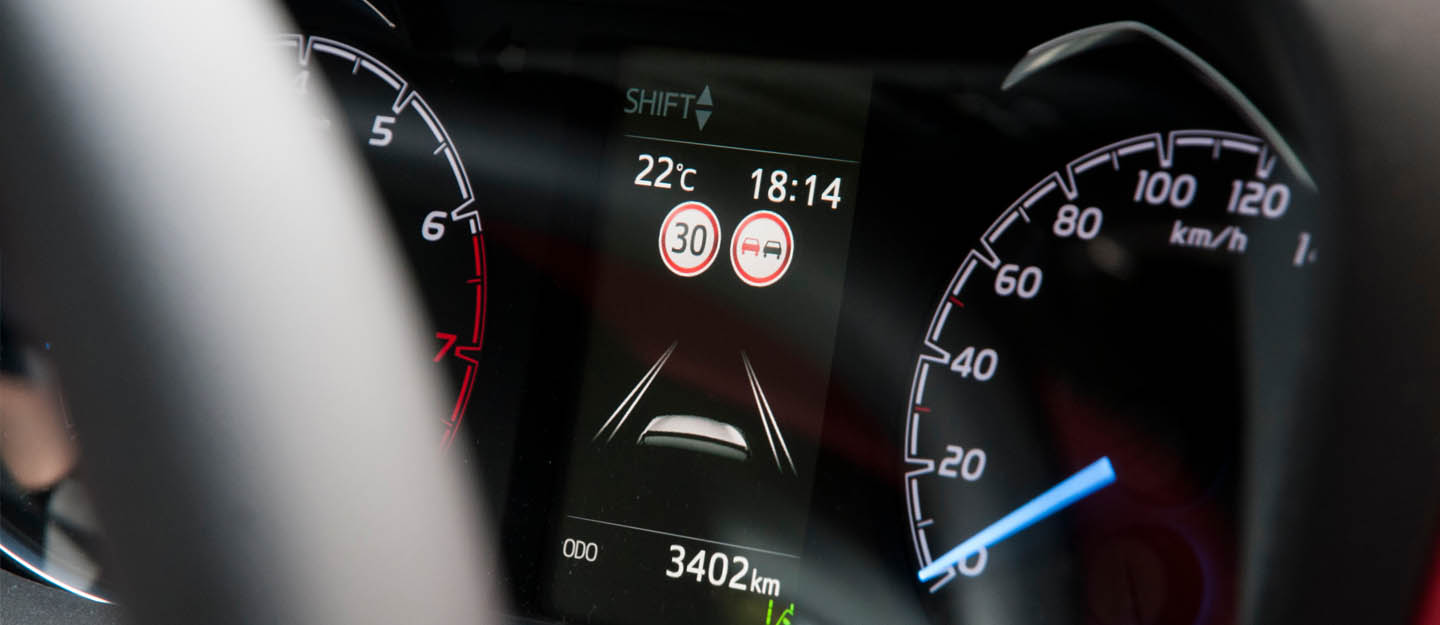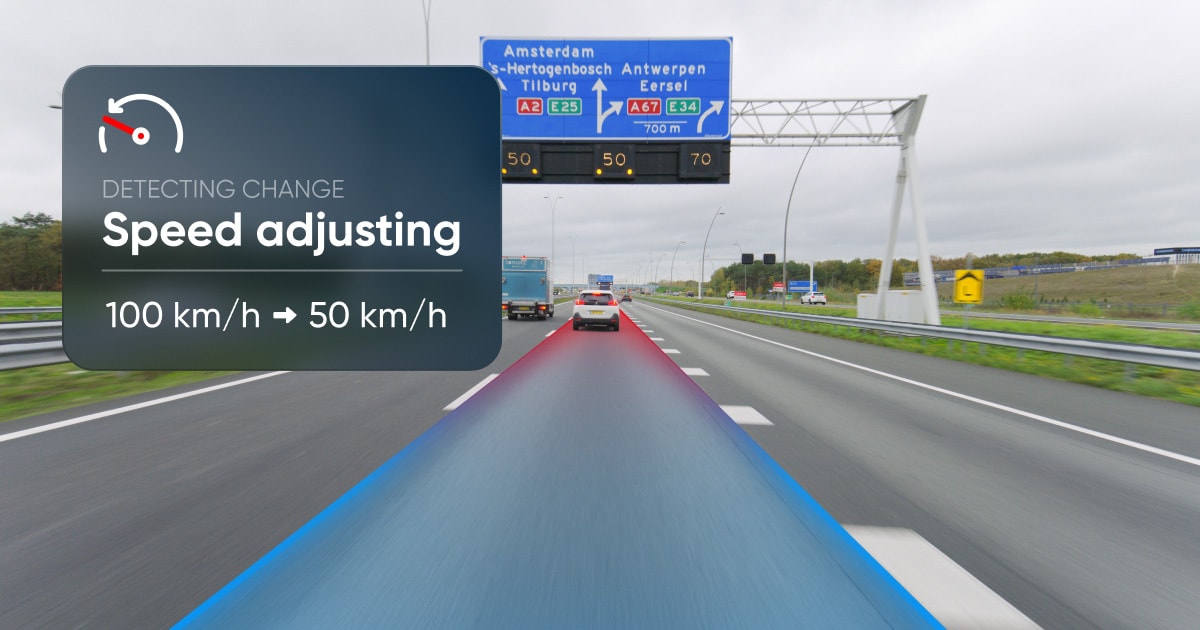ISA vs Traditional Speed Limiters: What’s the Difference?
Jun 7, 2025
Resolute Dynamics

Speed control isn’t just a box to tick—it’s a shield against crashes, a lever for fuel savings, and a way to keep fleet chaos from spiraling. If you’re steering a group of vehicles, you’ve likely bumped into something called Intelligent Speed Assistance (ISA). Sounds clever, but what sets it apart from those basic limiters that’ve been doing the rounds for decades? Time to draw the line between old habits and smarter tech.
Let’s break it down simply and see which option actually gives today’s fleets a smarter, safer edge on the road.
✅Key Takeaway:
Old-style speed limiters lock a vehicle’s top speed at a preset figure—rigid and unchanging. ISA, on the other hand, thinks on its feet. It reads road signs, taps into live data, and adjusts as conditions shift. For fleets covering everything from city streets to mountain passes, that kind of flexibility isn’t a luxury—it’s a game changer. Smarter, safer, and built for the routes ahead.
What Are Speed Limiters?

A standard speed limiter is a simple bit of tech. Once it’s in place, no amount of pedal-pushing will get the engine past its set ceiling. It’s firm, predictable, and completely unmoved by the road or the driver’s intent.
Speed limiters have long been used in trucks and buses. They help cut down on speeding incidents and reduce pressure on the engine. For fleet operators, these systems also mean fewer fines and fewer headaches when sticking to transport rules and legal requirements.
Here’s the catch—traditional speed limiters don’t adapt. Set it once, and that’s it. Whether you’re crawling through city streets or flying down the highway, the cap doesn’t budge.
What Is ISA (Intelligent Speed Assistance)?
Intelligent Speed Assistance (ISA) is a next-gen safety feature that helps drivers stick to speed limits as they change. Unlike old-school limiters that just block you from going over a fixed speed, ISA adjusts on the fly—responding to local limits and road conditions as you drive.
How Does ISA Work?

ISA uses a combination of AI-based decision systems and real-time data streams to monitor road conditions and vehicle surroundings. Here are the key technologies involved:
- GPS Location Tracking: The system constantly checks your vehicle’s exact position using satellite navigation. It cross-references your location with a digital map that contains speed limit data for each road segment.
- Road Sign Recognition (RSR): Onboard cameras scan the roadside and overhead traffic signs. Using computer vision and machine learning, ISA identifies speed limit signs—whether temporary, digital, or standard—and instantly updates the system.
- Vehicle Speed Monitoring: The system compares the vehicle’s current speed with the detected legal limit. If there’s a mismatch, ISA reacts—either by warning the driver or actively controlling speed.
- AI Algorithms: These help interpret conflicting or unclear information. For instance, if GPS says the limit is 100 km/h but a construction sign shows 60 km/h, the AI helps choose the safer, updated limit.
Types of ISA Systems
There are different levels of ISA, and each one offers a different degree of control:
- Informative (Advisory ISA)
-
These systems kick in when you go too fast—flashing a light, sounding a beep, or sending a quick jolt through the steering wheel to grab attention.
-
Drivers can brush it off, sure—but it’s a steady reminder to ease up and drive responsibly.
- Supportive (Warning + Resistance)
- In addition to alerts, the system may increase pedal resistance to discourage further acceleration.
- The driver can still override the system with force.
- Intervening or Mandatory ISA
- These systems can automatically limit engine power to slow the vehicle down gently and safely until it matches the speed limit.
- In many cases, the driver can’t override this, or can only do so temporarily in emergency situations.
Global Mandates and Regulations
ISA isn’t just a fancy add-on anymore—it’s required in many regions. Since July 2024, the European Union mandates that all new vehicles sold must include ISA under its General Safety Regulation. This shift supports the EU’s Vision Zero goal: wiping out road fatalities altogether through smarter safety tech.
Countries like the UK, UAE, Australia, and parts of Southeast Asia are also looking into laws that could make ISA a regular feature in all new vehicles.
Why ISA Matters for Fleet Safety
For fleet operators, ISA offers several major benefits:
- Dynamic Speed Compliance: It ensures drivers follow local speed rules without needing to memorize or constantly check signs.
- Reduced Accidents: Speeding is one of the top causes of collisions. ISA cuts this risk down drastically.
- Lower Penalties: Avoid fines, license suspensions, and insurance hikes by staying within legal limits.
- Fuel Efficiency: By preventing aggressive acceleration, ISA also supports better fuel economy.
Future-Ready Driving
ISA is more than just another compliance tool—it’s a foundational step toward autonomous driving and fully connected mobility ecosystems. By combining sensor data, smart maps, AI processing, and vehicle control, ISA becomes a building block for safer, smarter roads.
In a world where traffic laws change rapidly and cities are becoming “smart,” ISA ensures your fleet or personal vehicle doesn’t just follow the rules—it adapts in real time.
Key Differences Between ISA and Traditional Speed Limiters
Let’s look at how ISA and traditional limiters stack up against each other.
1. Technology
Traditional limiters are mechanical or electronic systems with a fixed configuration. ISA, on the other hand, uses advanced driver-assistance systems (ADAS) and machine learning to make real-time decisions.
ISA can “read” speed signs using vision sensors and cross-checks that with location data. It knows when the speed limit changes and reacts instantly.
2. Adaptability
ISA adapts on the fly. Drive into a school zone? It lowers your speed. Hit a highway? It adjusts again. Traditional limiters can’t do that—they don’t recognize context or conditions.
3. Driver Interaction
ISA offers driver-friendly features. In many versions, it warns before acting. Some allow brief overrides—for example, when overtaking another vehicle—while others enforce compliance automatically.
Traditional limiters don’t offer any flexibility. They’re always on, always at the same limit.
4. Data and Telematics Integration
ISA pairs perfectly with real-time telematics. That means fleet managers can track compliance, monitor behavior, and generate reports. You get predictive analytics and smarter decision-making.
At Resolute Dynamics, we integrate ISA with AI-powered telematics platforms that help fleets reduce risk, cut fuel costs, and stay within legal boundaries.
Traditional limiters? They don’t offer insights or data—just mechanical control.
5. Regulatory Compliance
ISA meets the latest road safety laws and regulations, especially in Europe. Traditional limiters may still be accepted, but they’re quickly falling behind as governments demand more intelligent solutions.
Which Is Better for Fleet Safety?
If your fleet operates in a single-speed environment, like mining or off-road logistics, traditional limiters might still do the job.
But if your vehicles travel across cities, highways, and variable zones, ISA is far superior. It provides dynamic safety, reduces manual oversight, and helps your fleet stay within legal speed limits—automatically.
More importantly, it can save lives. Speeding is one of the biggest causes of road deaths. A system like ISA that adapts in real time can make a huge difference.
How Resolute Dynamics Enhances ISA Technology
This part of the article showcases how Resolute Dynamics goes beyond just implementing Intelligent Speed Assistance (ISA)—it elevates it into a full-spectrum intelligent safety solution using cutting-edge technology and an integrated system approach.
“We don’t just sell tech—we shape the future of automotive safety.”
This opening line establishes thought leadership. Resolute Dynamics isn’t merely a vendor; it’s a pioneer in AI-driven vehicle safety. The company’s mission is transformative, not transactional. That builds trust and positions the brand as a visionary in fleet safety innovation.
The “Capture-Connect-Control” System Explained
Resolute Dynamics has a proprietary approach to safety technology called Capture-Connect-Control, which reflects the three critical phases of vehicle behavior management. Here’s what each component does in detail:
1. Capture: AI-Powered Vision
- Utilizes advanced driver assistance systems (ADAS) powered by AI and machine learning.
- High-definition cameras and sensors scan the road environment to detect:
- Speed limit signs
- Road hazards
- Pedestrians and cyclists
- Unsafe driver behavior like tailgating or lane drifting
- These real-time visual inputs feed into the ISA engine to ensure accurate and context-aware speed regulation.
- Essentially, this transforms a regular vehicle into a “seeing, thinking” machine.
2. Connect: Real-Time Telematics
- Here, data from the vehicle is captured, analyzed, and shared in real time.
- The telematics layer enables:
- Fleet-wide visibility on driver performance
- Instant alerts to fleet managers when limits are exceeded
- Data logging for compliance audits
- Integration with cloud dashboards and mobile apps
- This makes ISA not just a passive system, but an interactive safety intelligence layer for the entire fleet.
3. Control: Intelligent Vehicle Management
- Once a threat or violation is detected, the system moves to intervention.
- The Control layer:
- Gently reduces vehicle speed by limiting engine torque
- Enforces ISA rules automatically, even if the driver is distracted or unaware
- Allows for contextual control—meaning speed management adapts to road type, weather, and traffic
This is where ISA becomes more than a compliance tool—it becomes an active co-driver, enhancing both safety and efficiency.
Global Scale and Proven Results
“With over 200,000 connected vehicles and clients across 20+ countries…”
This stat showcases credibility and global trust. It tells prospective customers and regulators that the system is not experimental—it’s battle-tested across different climates, road systems, and regulatory environments.
Turning Compliance into Competitive Advantage
Most companies view regulatory compliance as a burden—something to tick off a list. But Resolute Dynamics positions ISA as a business asset, not just a legal requirement.
By preventing accidents, minimizing fuel waste, and boosting driver accountability, fleets can:
- Lower insurance premiums
- Improve operational efficiency
- Gain a reputation for safety and reliability
This approach helps customers see ISA as an investment in long-term profitability.
Final Thoughts
ISA and traditional speed limiters both aim to control speed, but only one truly understands the road.
While traditional systems are simple and effective in limited cases, Intelligent Speed Assistance offers a smarter, safer, and more adaptive way to protect your fleet, your drivers, and your brand.
Looking to future-proof your fleet? It might be time to upgrade from basic limiters to AI-driven ISA technology that sees the road like a human and reacts even faster.


